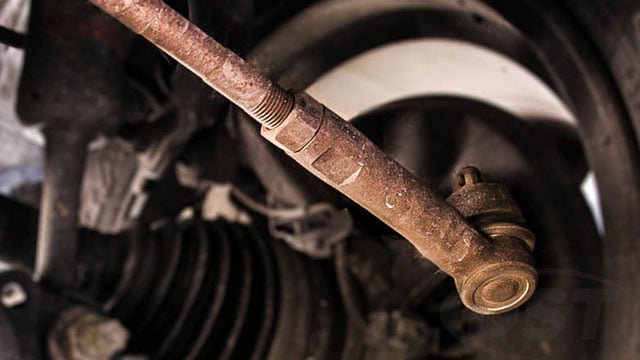How to Check Tie Rod Ends
If you've noticed some of the symptoms of a bad tie rod but haven't ruled out other possible causes then checking the tie rod ends is the easiest way to narrow it down.
Getting Your Hands Dirty
To check the tie rod you need to try and move the tie rod ends by hand and look for looseness or play. Besides play in the joint you need to check for moisture inside the seal, damage to the dust boot, or corrosion on the stud.
- Checking for looseness in the actual tie rod ends by hand is a pretty simple process and can be done without jacking up the vehicle and you should be able to tell if the tie rod end is bad without much trouble. Just remember: Outer tie rod end shouldn't move vertical, inner tie rod end shouldn't move horizontal. And don't use a pry bar or excessive force since even a good tie rod end will move with enough pressure.
- Alternatively if you can observe the underside of the vehicle while someone else moves the steering wheel back and forth rapidly you can observe the same movement in the tie rod ends if they're bad (outer moving up or down, inner moving front to back).
- Checking the dust boots for damage can also be a good indicator that a tie rod is headed for trouble soon. This is a little more intense since getting a good look at the whole seal requires jacking up the vehicle and taking the wheels off. Better to check those when you already need to take the wheels off for other reasons.

